Schellinkhout pumping station and the Great Mill
East of Hoorn along the Zuiderdijk in the open landscape is a monumental mill with an old pumping station next to it. This is the Great Mill and pumping station Schellinkhout. Together they provide a wonderful picture of the development of drainage technology from wind to motor drainage. Both the mill and the pumping station are national monuments and often open during National Mill Days.
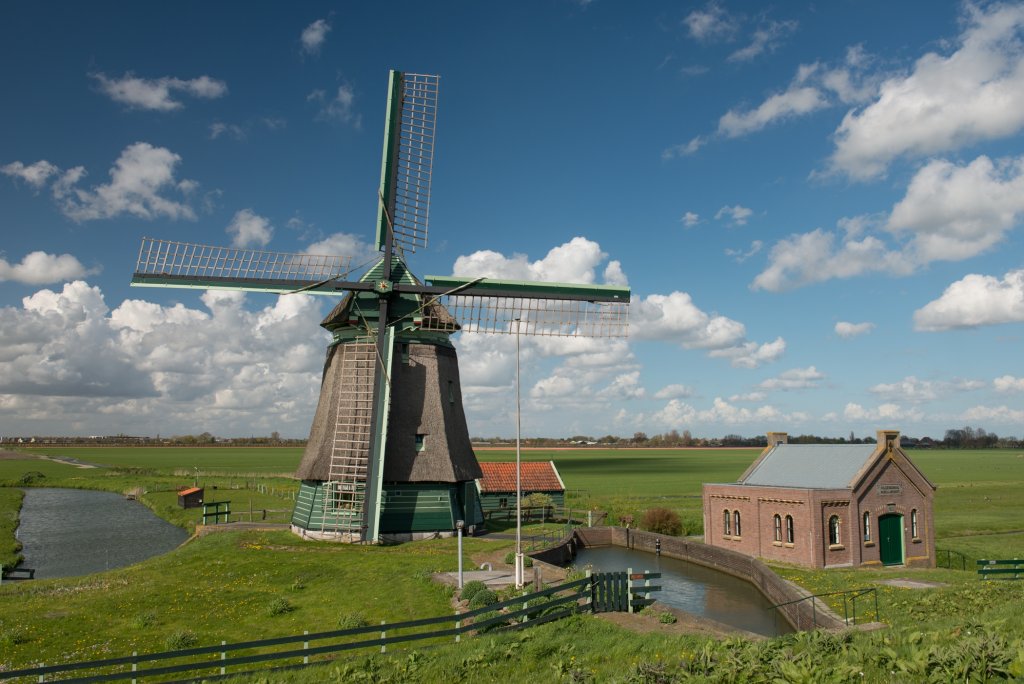
Polder Schellinkhout
The area of polder Schellinkhout was originally a large swampy peat bog of 650 hectares. To make the area suitable for agriculture in the late Middle Ages, the peat had to be drained. This was done by digging ditches in the peat and draining the water to the former Zuiderzee. However, dewatering led to oxidation and subsidence of the peat and rapid lowering of the ground level.
At first, excess rainwater could still drain into the Zuiderzee at low tide through a channel closed with a valve. This worked less and less well due to subsidence. At the end of the 15th century there were heavy complaints about flooding in Schellinkhout. The solution to this problem was the construction of polder mills.
The Little and Big Mill
The Schellinkhout polder decided on this move between 1560 and 1569. The first mill became known as the Small Mill and stood a little way inland. A second mill, the Large Mill, followed not long after. Both mills were equipped with scoop wheels. The Little Mill ground the water about a meter up a ditch to the Big Mill. The latter milled it further up into a gully. Through a small sluice in the sea dike, the water would flow from that basin into the Zuiderzee. The paddle wheel of the Large Mill was replaced by a screw pump in 1861. The Small Mill followed a year later.


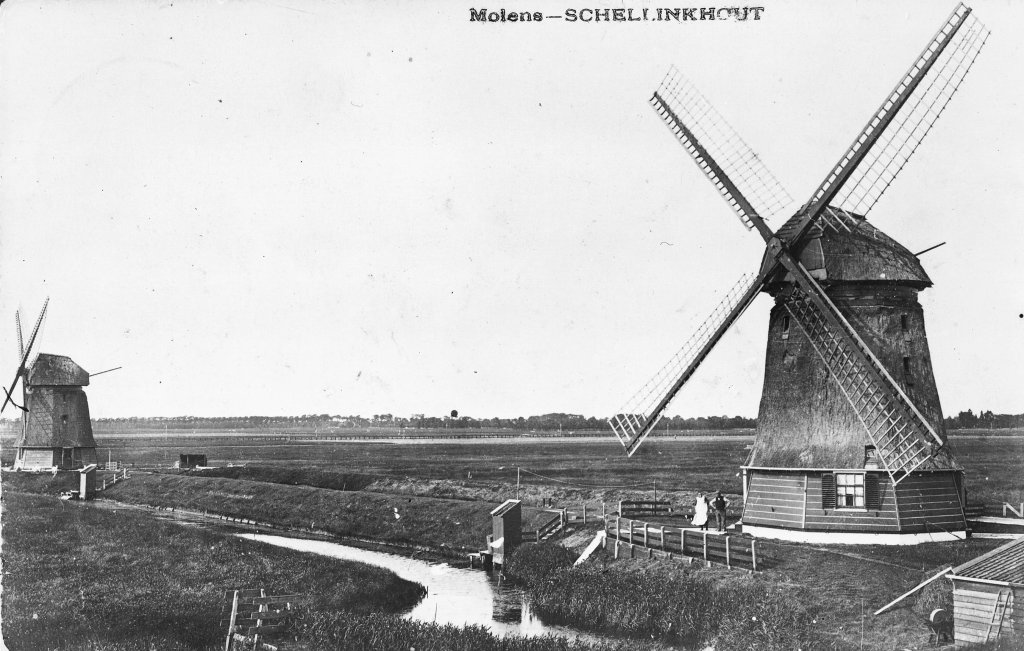
Schellinkhout Pumping Station
As early as 1879 the first voices were raised in favor of a steam pumping station in favor of abandoning wind power. However, this did not lead to anything and it was not until 1900 that a motor pumping station arose next to the Great Mill. It was equipped with a petroleum engine that drove a centrifugal pump. The small building was designed by architect K. Swagerman of Bovenkarspel.
In 1913, the polder board decided to accept a plan from the well-known engineering firm W.C. and K. de Wit in Amsterdam. This involved installing a new, more powerful engine from an English factory and a new pump (made by INVICIBLE/C/GWYNNES LTD. LONDON). This required more space and so the pumping station was provided with an extension with a flat roof.

The pumping station was now so powerful that people could do without the mills. The Small Mill was sold for demolition in 1915. The Big Mill, however, remained standing because it served as a residence for the operator of the pumping station. In 1931, the polder sold the rods, which eventually ended up in the corn mill De Hoop in Oude Niedorp.
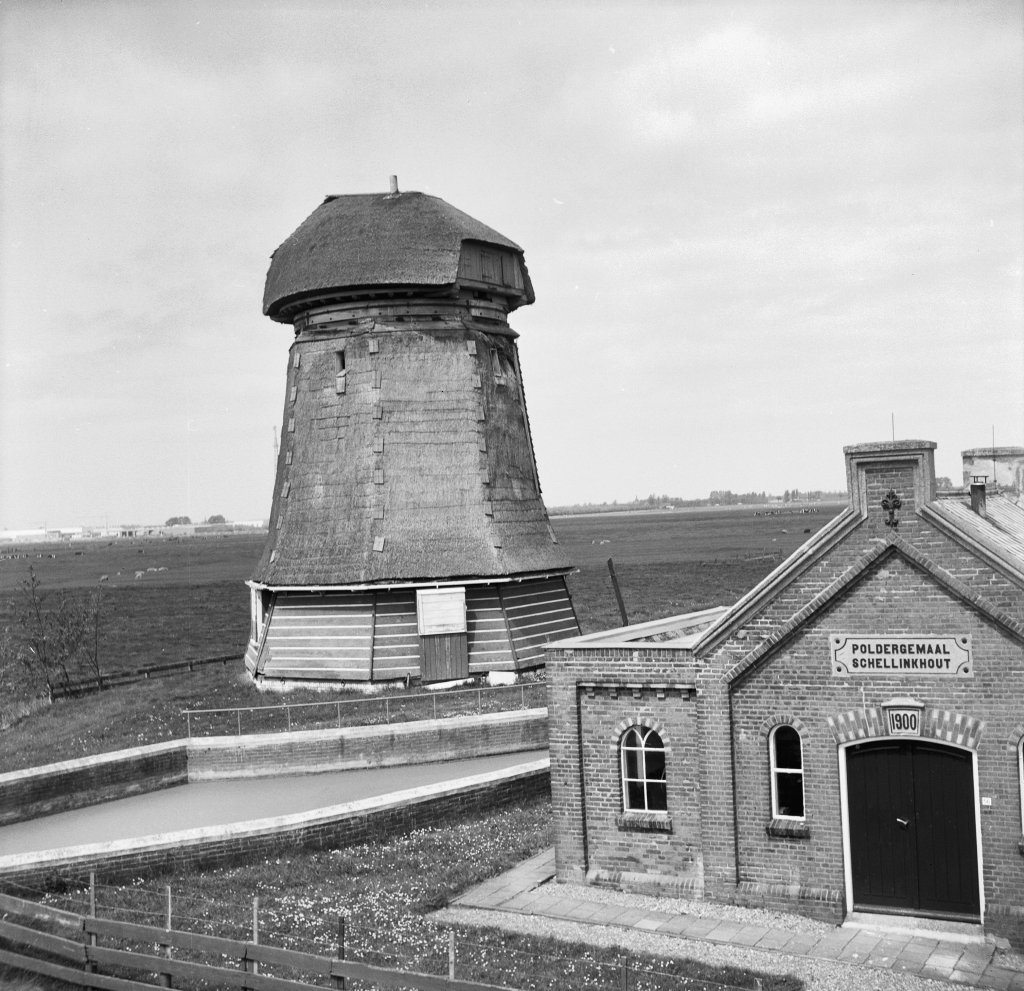
During World War II, pumping caused major problems because petroleum products were immediately rationed very strictly. To keep the polder dry, the polder spent 4,300 guilders on fuel in the last months of the war. For 17 liters of petroleum, for example, 595 guilders was paid. After the war, the engine was not good anymore because even carbolineum, a wood preservative, had been used as fuel. Therefore, it was replaced by an electric motor in 1949.
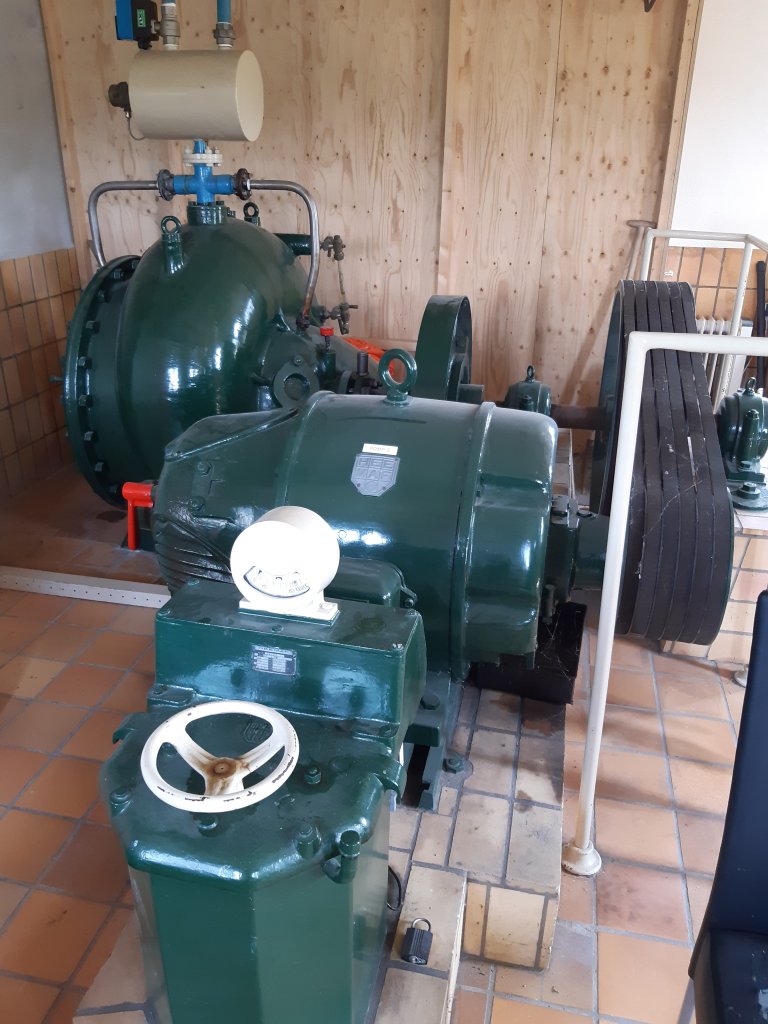
Restoration and monument status
In 1958, the municipality of Schellinkhout took over the mill, which by now was in poor condition. After years of bickering about financing, restoration of the Great Mill finally started in 1979. Meanwhile it had come into the hands of the new Westfriesland Water Board. This transferred the mill to its current owner, the Westfriese Molens Foundation, in 1991.
At the beginning of the 1990s, the pumping station came to an end due to land consolidation. Waterschap Westfriesland transferred it to the Stichting De Westfriese Molens in 1994 for nothing. It was placed on the national monument list in 1997. Six years later, in 2003, Waterschap Westfriesland took the pumping station back because it wanted to place the control boxes of the new pumping station in the small building. That new pumping station sits in a pit behind the old one. Since then, the pumping station has served as a reserve for the low western part of the polder. Because of this repurposing, the Great Mill's volunteer miller lost his storage. That was solved by the construction of a mill barn, modeled after the old barns at the Schermer mills, diagonally behind the mill.
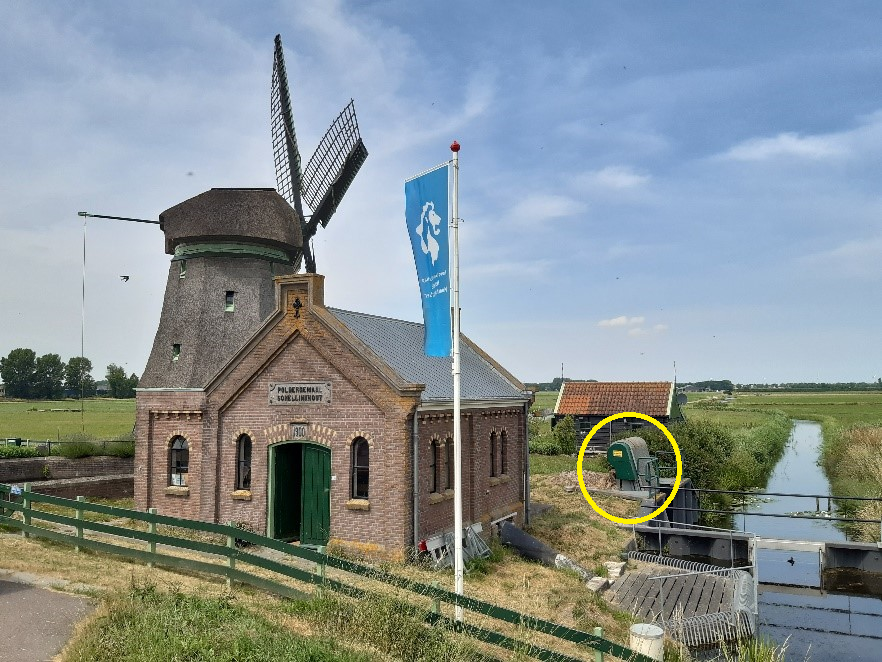
Additional
- Walking: if you walk the Schellinkhout Route of the Westfriesland Walking Network, you will pass through the beautiful ribbon village of Schellinkhout.
- Cycling: the Westfriese Omringdijk cycling route
- The Ronde van de Westfriese Omringdijk is held annually.
- In this YouTube video from 1997, volunteer miller Coen Rood gives a tour of the mill.